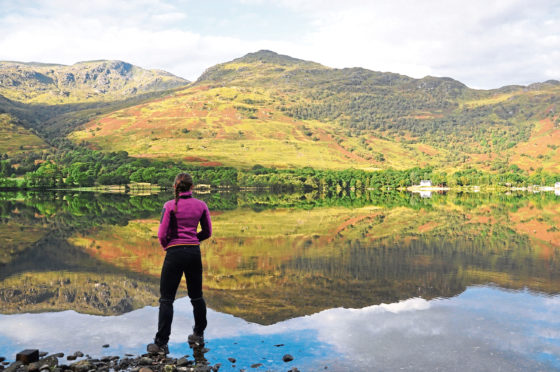
It’s no wonder that Loch Lomond & The Trossachs National Park has always been a popular place to visit.
Our magnificent landscapes lie within an hour’s drive of half of Scotland’s population, and are visited by more than four million people each year.
Finding ways to protect our fragile natural habitats while encouraging people to get outdoors is what National Parks were set up to do.
The onset of the pandemic has had significant economic consequences and has changed the visitor profile.
As lockdown came in early spring, the National Park was initially a quiet place. While people weren’t able to visit in person, our staff found ways to bring Loch Lomond & The Trossachs to them via the #Lochdown campaign.
From online ranger home-schooling lessons and drone footage of our lochs, to camping-at-home challenges, we found ways to bring the National Park to life, while asking people to stay away.
June was particularly challenging. Most of our facilities and local businesses were closed, yet we still had visitors arriving, despite the lockdown travel restrictions. We invested time in reassuring anxious local communities, listening to local businesses to understand their challenges, while facilitating dialogue with MSPs on the support needed.
Tourism was officially able to reopen mid-July, and we adapted our facilities for what would be a busier and longer season than ever before.
While we did see inconsiderate behaviour from some, it’s important to recognise how the National Park has helped people cope with life during the pandemic.
We’ve stayed focussed on tackling the climate emergency and we supported green recovery with £100k of grants and visitor site investments.
This year demonstrated more than ever the important role National Parks can play placing the environment at the heart of recovery and supporting personal wellbeing.
Gordon Watson, CEO of Loch Lomond & The Trossachs National Park.
The Cairngorms National Park is visited by more than two million people each year. This past year, however, has been a year like no other.
We responded to the challenges of Covid in a spirit of partnership, developing the #CairngormsTogether banner with the Cairngorms Business Partnership and many others to focus on visitor management.
The challenges we face are complex but linking nature, climate change, wellbeing and economic recovery is exactly what the National Parks in Scotland were set up to do.
This approach was embedded in the aims we were given 20 years ago and 2020 proved this approach is needed now more than ever.
Grant Moir, CEO of The Cairngorms National Park

Enjoy the convenience of having The Sunday Post delivered as a digital ePaper straight to your smartphone, tablet or computer.
Subscribe for only £5.49 a month and enjoy all the benefits of the printed paper as a digital replica.
Subscribe